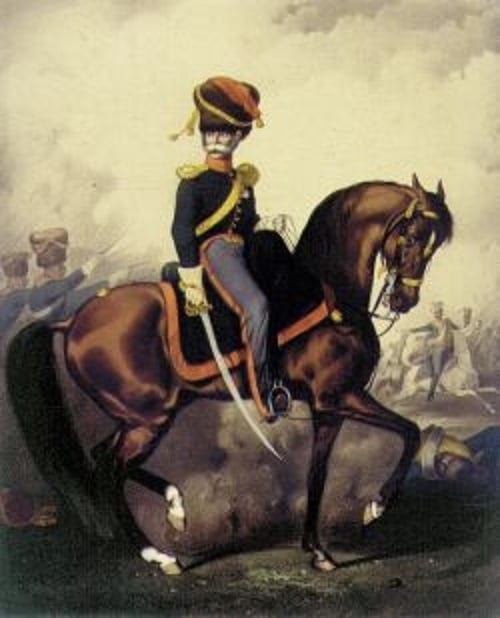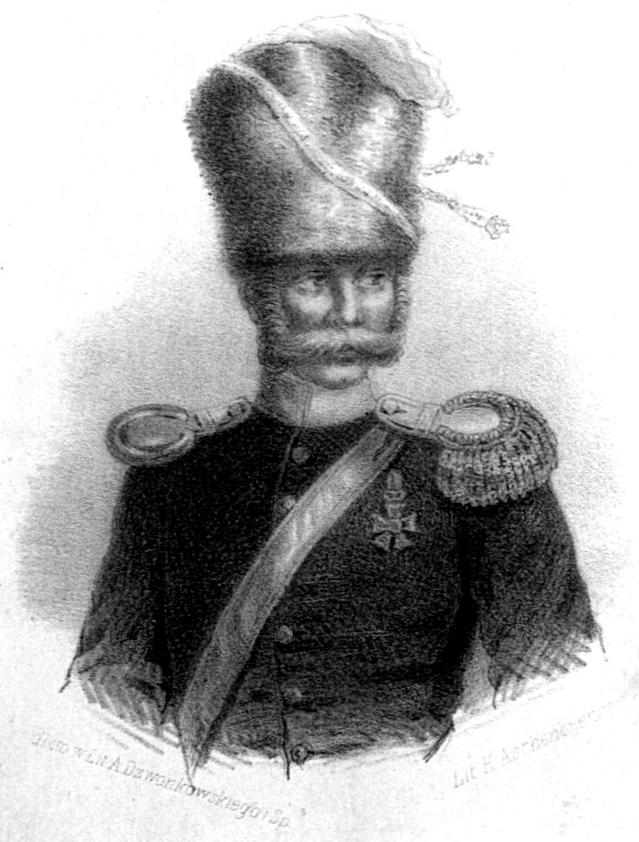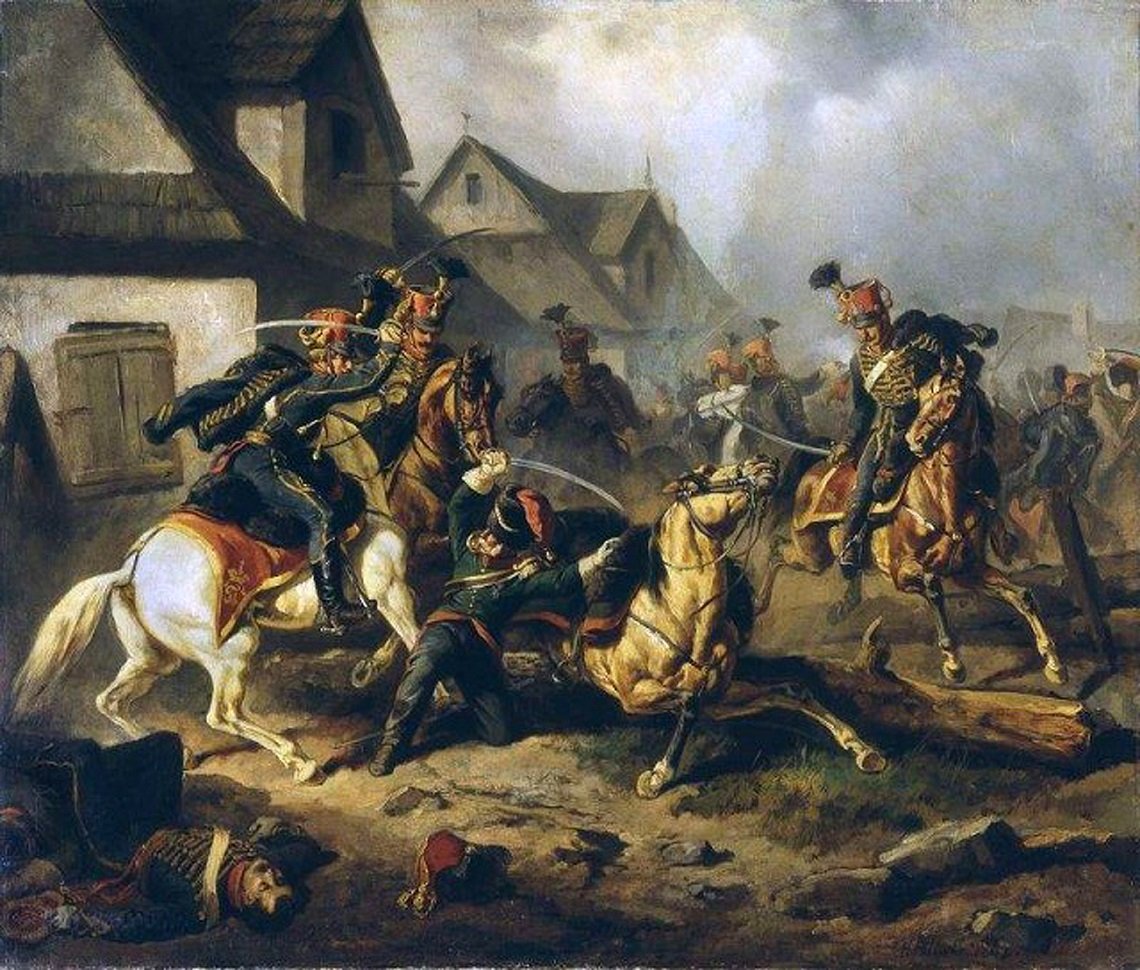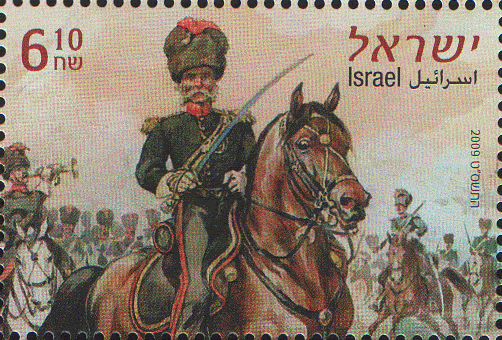It is commonly believed that no organized Jewish fighting force was ever established after the Bar Kokhba Revolt, which broke out in the second century A.D., until the Jewish Legion was founded by Ze’ev Jabotinsky and Joseph Trumpeldor during World War I. An examination of the historic turnabout that occurred in the Jewish mindset – between the time of the Kishinev pogrom and Nordau’s “muscular Judaism” and the formation of the Palmach followed by the IDF – can be found, among other things, in the wonderful book Land and Power, which was written by the historian, Prof. Anita Shapira.
But this time we’ll turn the clock back to 1794, when the huge territory of the kingdom of Poland and Lithuania was divided up between the three superpowers of the period – Russia, Prussia and Austria. The intention, of course, is to the famous partition of Poland. Poland lagged behind other nations economically and militarily after failing to find its place in the revolutionary Enlightenment of the 18th century, while at the same perpetuating the corrupt rule of the aristocracy and clergy.

The partition of Poland by the three superpowers led to an outpouring of nationalist sentiment among the masses. One of those people was Tadeusz Kościuszko, a seasoned rebel who had also fought overseas in the American Revolution. Kościuszko planned an uprising whose aim was to gain independence for Poland and create a constitution based on the model of the French and American revolutions. The uprising broke out in the capital city of Warsaw, whose population at the time was about eight percent Jewish.
The fighting spirit and the struggle for Poland’s national independence also had an impact on Warsaw’s Jews. Proof of that was found, for example, in a Polish newspaper published on May 12, 1794: “Even the Jews, the people who cling so tightly to Old Testament customs, fought with weapons on their festivals, extended assistance in the vicinity the cannons, and carried out every assignment they were sent to do. And now, as well, they are keeping vigils and doing reconnaissance on the Sabbaths.” Another Polish newspaper also expressed its surprise over the surge in the Jewish fighting spirit. Its editorial noted that “strangely enough, what could never be achieved in the past even when using force, Warsaw’s Jews are now doing willingly. They are taking part in vigils and joining the scouts doing reconnaissance, and some of them are even taking up arms. This step must be acknowledged and must be given the praise it deserves.”
So what in that period, as opposed to others, drove the Jews to be weaned from their custom of waiting to fill their traditional role as scapegoats? A sociological study of Warsaw’s Jews at the time indicates that the community was divided into two social classes. There were the well-to-do Jews, namely the merchants and those who had ties with the government, who took their property and money and fled from Warsaw after the uprising began. On the other hand, there was an impoverished Jewish proletariat from which a group of fighters emerged, who believed that joining the Polish rebellion would improve their economic and social status.

Dov Baer (Berek) Joselewicz was born into a Jewish family in 1764 in the Kovno province of the Polish-Lithuanian Commonwealth. After getting an education, he was appointed manager of the commercial affairs of the bishop of Vilna. His business dealings took Joselewicz to France, where he was first exposed to the thinking of the revolutionary age. Following his return home, he settled in a suburb of the capital city, Warsaw. Parallels between his biography and that of Tadeusz Kościuszko connected the two, and at a certain stage Joselewicz suggested to the leader of the Polish uprising that he form a Jewish cavalry regiment.
Joselewicz made an emotional appeal to his fellow Jews, calling on them to join the struggle for Polish independence, with Warsaw’s Jewish population being his main target audience. “Hear ye, all the people of Israel, all those who have the image of G-d in their hearts, and all those who wish to help in the war over the homeland,” he said in flowery language. “Know that the hour has come to devote our strengths to it. Many powerful ministers and sons of great aristocrats are no doubt prepared to die, so shouldn’t we, the persecuted, also cling to the sword while being crushed by all the human fangs in the country? Why not go and buy our freedom, which has been clearly promised to us in words that come from the heart, as it was promised to others. But first we must be worthy of it. I am privileged to have been commanded by the authorities to head the regiment. Loyal brothers, we shall fight in the homeland as long as a single drop of blood remains in us. Rise up like lions!”

The best known battle that the “Sons of Warsaw” regiment fought in under the command of Berek Joselewicz took place in the Praga Quarter, located in the outskirts of Warsaw. The outcome of the battle, which was waged against Russian troops, was devastating. Out of a regiment numbering 500 ordinary Jewish soldiers – most of whom Joselewicz literally gathered up from the streets of Warsaw – many were killed in what is known in the Polish national memory as the Praga Massacre. Joselewicz managed to survive and escape, but was later taken a prisoner of war by the Austrians.
After the insurrection was suppressed, Joselewicz made his way to Galicia and from there to Italy, where he joined forces with a Polish general who had formed a corps under the French army during the Napoleonic Wars. Hoping to liberate Poland with help from the French army, Joselewicz fought in numerous battles. He achieved the rank of colonel and also received some of the highest and most prestigious distinguished service medals, such as the Polish Gold Cross and the highest Polish military medal for bravery in the face of the enemy.

He was killed in action in May 1809 not far from Warsaw, while fighting in the ranks of the French army against the Austrians. He was eulogized by the great Polish leader, Potocki, who said the following: “You have saddened the land of the heroes, the honorable minister of the regiments, after your courage carried you into the camp of the enemies. Remember, remember forever that in the spirt of bravery you were the first model for your people and you personified the image of the heroes that the daughters of Zion have mourned.”
Since then, Joselewicz has become a mythic figure in the Polish national memory. Schools and many streets are named after him and his burial place, which is located near the city of Kock, is a pilgrimage site. By the way, with regard to his burial place, legend has it that because Joselewicz was Jewish, the community wanted to bury him as one of their own. But the Poles considered him a national hero and insisted that he be buried as a Pole. After the parties failed to agree whether he should be buried as a Jew or as a Pole, the compromise they reached was that his body would be placed on a horse whose eyes were blindfolded and Joselewicz would be buried wherever the horse came to a halt. And that’s how it was. In 2009, to mark the 200th anniversary of his death, the Israel Philatelic Federation and the Polish Postal Service issued a joint stamp that bears his portrait.
(The quotes in this article were taken from the superb podcast hosted by Yuval Malchi, “A Piece of History.”)